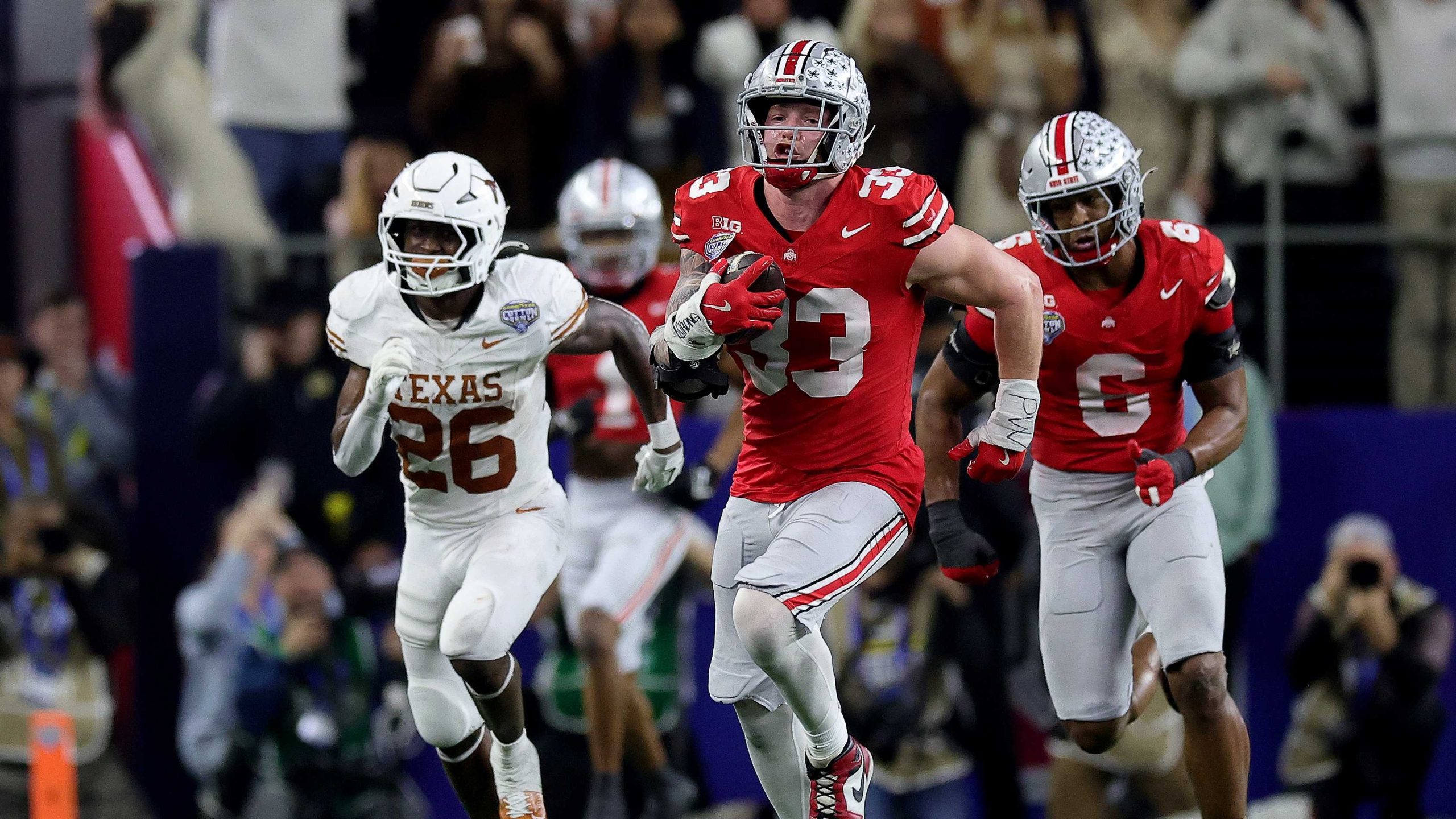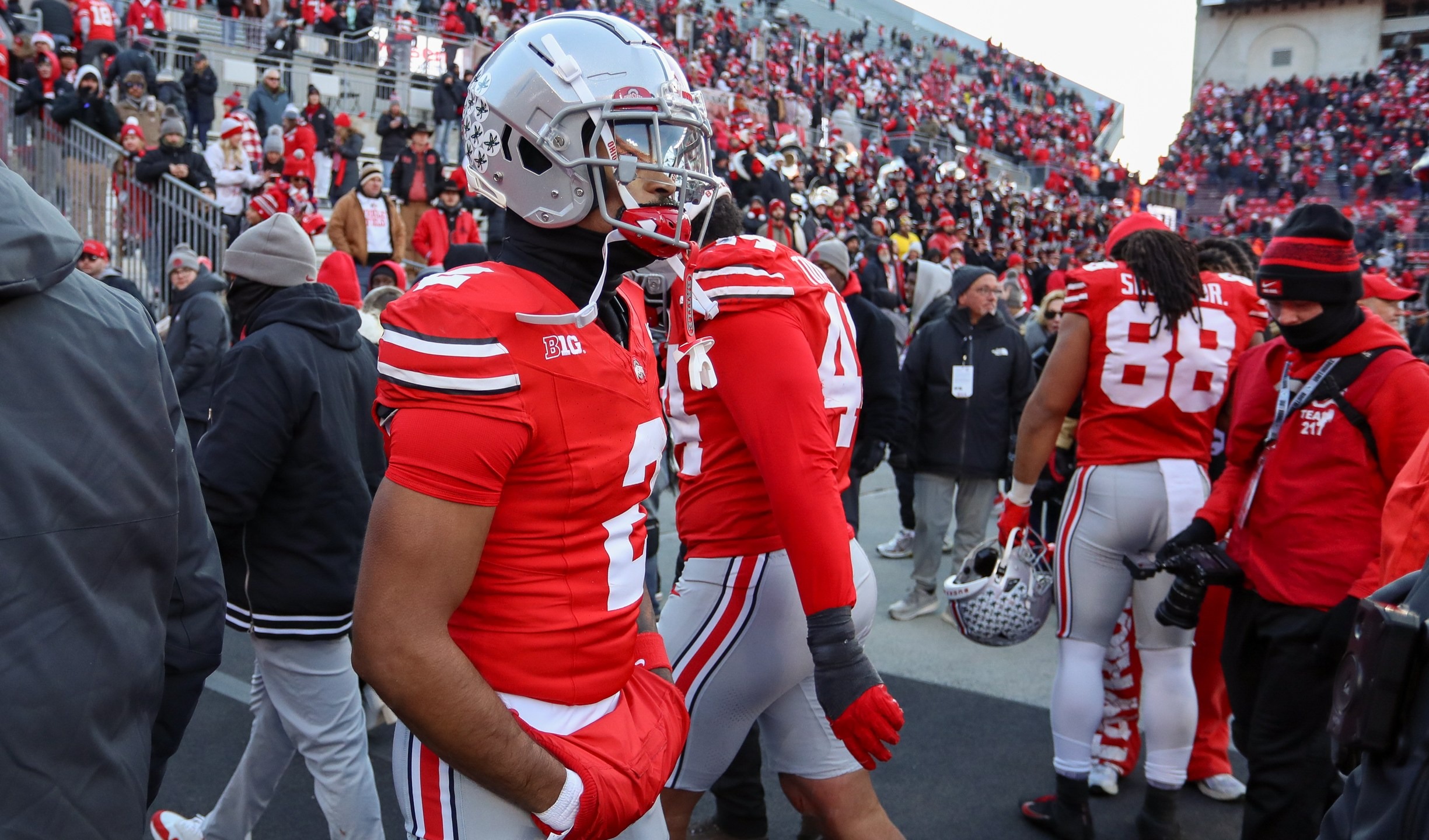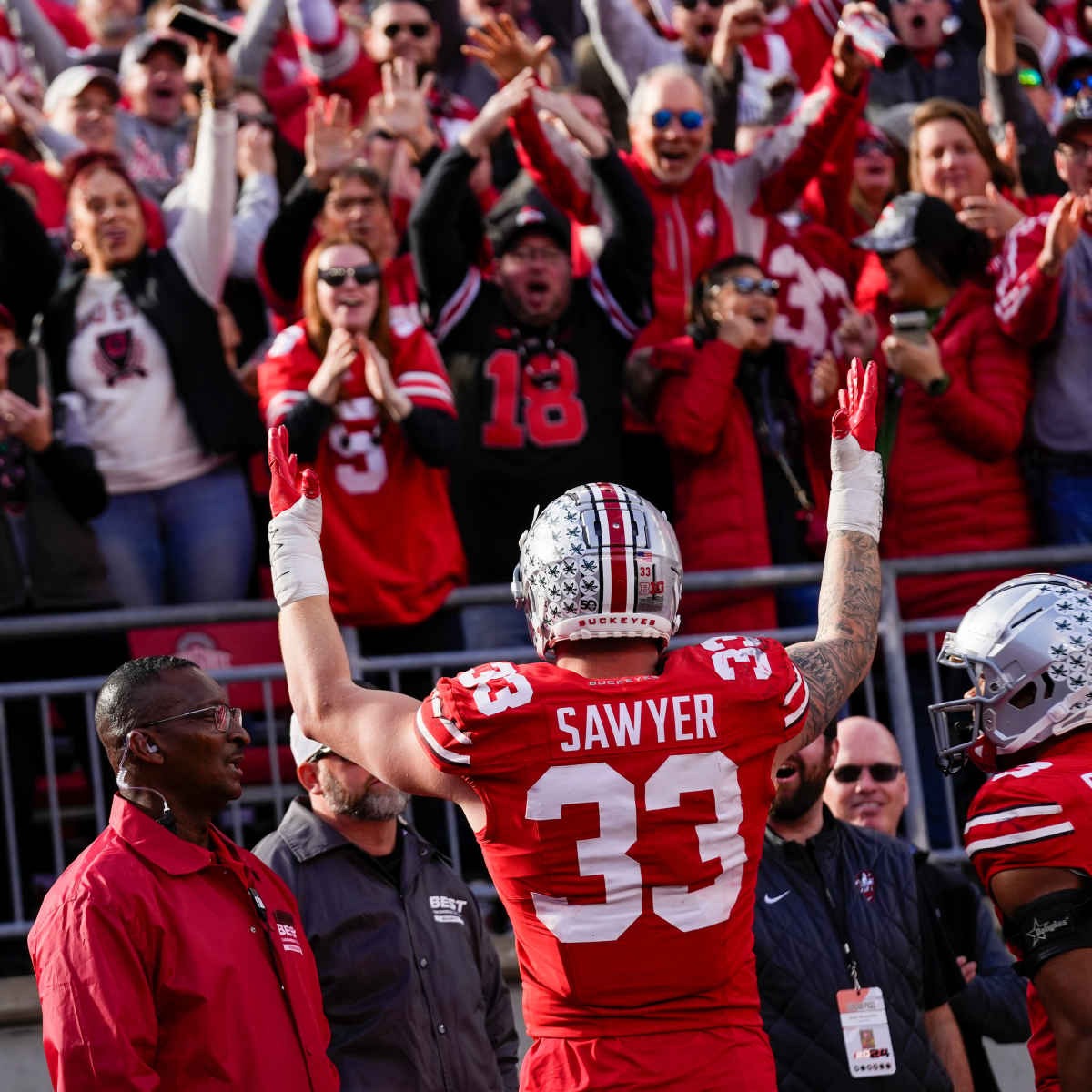Ohio State triumphed over Notre Dame to clinch its sixth national title and its first since 2014, as reported by correspondent Gethin Coolbaugh.
Howard recounted a pivotal moment during the game, saying, “They were running man coverage and I said, ‘Hey, I’m gonna let this loose and let him make a play on it,’” referencing a play that starkly contrasted with Ohio State’s historical “Three yards and a cloud of dust” strategy.

Just seven weeks prior, on November 30, this victory seemed improbable after a 13-10 loss to Michigan, which triggered chaos on the field and raised doubts about coach Ryan Day’s future with the program.
“It’s a great story about a bunch of guys who have just overcome some really tough situations, and at the point where there are a lot of people that counted us out, they just kept swinging and kept fighting,” Day expressed.
Momentum Alterations and Key Plays
With Ohio State initially in control of the game, the dynamics shifted dramatically as Notre Dame rallied.
The atmosphere in the packed stadium, vibrant with Ohio State fans in red and Notre Dame supporters in green, added to the intensity.
After falling behind 31-7, Notre Dame mounted a comeback, scoring two touchdowns and converting two 2-point conversions, narrowing the gap to just one score late in the fourth quarter.
The in-stadium camera captured legendary Irish coach Lou Holtz, who, despite the booing from Buckeye fans, offered a thumbs-up from his luxury box.
However, time was not on Notre Dame’s side. After stopping Ohio State on their first two plays and using their timeouts, the Irish placed Christian Gray—who had clinched Notre Dame’s semifinal victory over Penn State with an interception—in single coverage against Smith.
Smith managed to break free from Gray along the right sideline, allowing Howard to deliver what he deemed his best pass of the season right into the hands of the second-team All-American.
This key play led to a field goal that ignited the celebration and helped Ohio State cover the 8.5-point spread at BetMGM Sportsbook. “It was do or die; it was that type of down,” remarked Notre Dame coach Marcus Freeman. “He’s a heck of a player. He’s difficult to cover.”
Ohio State’s Redemption and Dominance
Ohio State’s success was bolstered by Howard, a transfer from Kansas State, who passed for 231 yards and two touchdowns, though the standout moment was his crucial throw to Smith in a high-pressure situation.
Smith, who had been relatively quiet during the game after being contained by Texas in the semifinals, finally broke free for a major play, ending the night with five receptions for 88 yards.
“We felt at the end we wanted to give Jeremiah that shot,” Day explained. “We really hadn’t thrown it all night, but I thought, ‘Know what, let’s be aggressive, let’s do this and lay it on the line.’”
Despite Ohio State’s early offensive prowess, scoring touchdowns on their first four possessions and adding a field goal, the game still felt competitive.
Judkins, a transfer from Mississippi, highlighted Ohio State’s strategic use of the transfer portal, rushing for 100 yards on 11 carries and scoring three touchdowns, including a 70-yard run that extended the lead to 28-7, seemingly putting the game out of reach.
Questions now loom for Freeman regarding some critical decisions made during the game, particularly the unsuccessful fake punt in the third quarter that allowed Ohio State to extend their lead to 31-7, as well as the decision to send Mitch Jeter out for a short field goal attempt while trailing by 16 points and facing fourth-and-goal from the nine.
The latter decision may have been viewed more favorably had Jeter’s kick not hit the left upright. “I know it’s still a two-score game, but you have a better probability of getting 14 points than you do 16 points,” Freeman acknowledged.
Throughout the contest, Ohio State established itself as the superior team, amassing 445 yards to Notre Dame’s 308. Howard began the game with a perfect completion streak, successfully hitting his first 13 passes without interruption.
The Buckeyes only had to punt once during the entire game. As they navigated through the new expanded playoff system, Ohio State capitalized on their opportunity, achieving an impressive average score of 36-21 across four games in a tournament format that had just recently expanded to twelve teams—a fortunate turn of events for a team that did not compete for the Big Ten title that year.
Despite being seeded eighth, the playoff seeding proved largely irrelevant, with the lower seeds winning every game in both the quarterfinals and semifinals, leading to a title match between No. 7 and No. 8 seeds that was dominated by the Buckeyes.

This victory allows Ohio State to move past any lingering frustrations regarding their November loss to Michigan, which marked their fourth consecutive defeat in that rivalry and ended with an on-field brawl after Wolverine players attempted to plant a flag at midfield.
The atmosphere had led many to speculate about Day’s future, as this victory effectively silences doubts regarding his tenure, given the program’s decade-long wait for a national title.
Now, the Ohio State marching band can proudly dot the “I” with the national title trophy, and Day finds himself alongside legendary coaches such as Urban Meyer (2014), Jim Tressel (2002), Woody Hayes (known for “Three yards and a cloud of dust”), and Paul Brown, who lent his name to the NFL’s Cleveland Browns.
Freeman’s loss means that college football continues to lack a Black coach who has won a national title, a milestone he was attempting to achieve.
Instead, this match will be remembered for a different historical context, as it marked the first instance of the Big Ten securing back-to-back championships since 1942.
Michigan, last year’s champion, watched this game from home, but still played a vital role in a Buckeyes redemption narrative that few anticipated.
